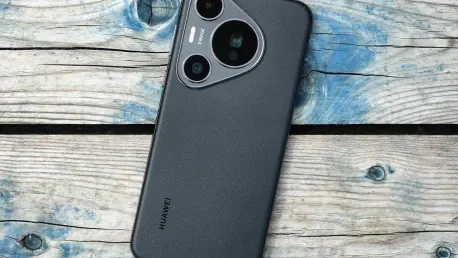The recent release of Huawei’s Mate 70 smartphones has garnered significant attention, primarily due to its in-house Kirin 9020 processor. This development has been celebrated on Chinese social media platforms as a notable achievement in the company’s quest for self-reliance in the tech sector. However, it’s crucial to understand that the Kirin 9020 does not mark a substantial leap from its predecessors, reflecting Huawei’s ongoing struggles due to US sanctions that constrain access to cutting-edge semiconductors. Despite the enthusiastic claims of a 30% performance increase, independent analysis by TechInsights suggests a more modest advancement, pointing towards a 15% increase in die size and the potential use of chiplet technology. As the Mate 70 is launched amid these challenges, its performance and market reception are under intense scrutiny.
The Reality Behind the Kirin 9020 Chip
TechInsights, a renowned Canadian semiconductor research firm, conducted a thorough analysis of the new Kirin 9020 chip, revealing it as an enhanced version of the Kirin 9010 rather than a significant overhaul. Produced by China’s Semiconductor Manufacturing International Corporation (SMIC) using a 7-nanometer process, it falls short of the widely anticipated 5-nanometer technology, which would signify a major breakthrough. The Kirin 9020’s packaging shares similarities with previous models, bearing close markings that further emphasize the incremental advancements rather than revolutionary enhancements. Though Chinese netizens have hailed it as a “fully home-grown chip” with significant performance boosts, these claims seem overblown when juxtaposed with the hard facts provided by expert analysis.
The Kirin 9020’s modest improvements reflect Huawei’s attempts to navigate the restrictions imposed by US sanctions. By potentially employing chiplet technology, the company appears to be circumventing some limitations, but this strategy is not without its drawbacks. The enforced dependence on older, less advanced manufacturing processes highlights the hurdles that Huawei continues to face. These technological bottlenecks could impact the overall performance and competitiveness of the Mate 70, particularly when compared with other flagship smartphones that utilize more advanced processors. The ongoing geopolitical challenges and the resulting technological constraints underscore the difficulties Huawei grapples with as it strives to maintain its market position.
Market Implications and Sales Projections
Despite the limitations of the Kirin 9020, the Mate 70’s release has still created a buzz, particularly within China. However, a closer look at market projections paints a less optimistic picture for the device’s global reception and sales performance. The US has recently intensified its export controls on China’s semiconductor industry, adding 140 Chinese firms to a trade blacklist and banning the sale of high-bandwidth memory chips to China. These actions are aimed at curtailing advancements in China’s military capabilities but also have significant repercussions for commercial technology products like the Mate 70.
Analysts predict that Huawei’s Mate 70 will fall short in sales compared to its predecessor, the Mate 60, primarily due to its weaker processor performance and the increased risks in its supply chain amid escalating geopolitical tensions. Sales for the Mate 70 are estimated at around 3 million units for the fourth quarter of 2024, equating to about 22 percent of Huawei’s total shipments during that period. These projections indicate that the Mate 70 may not achieve the same level of commercial success as earlier models, particularly outside China.
The Mate 70’s appeal is further limited by its operating system, HarmonyOS Next, which does not support Android apps. This restriction significantly constrains its attractiveness to global consumers who rely on the extensive app ecosystem that Android offers. Consequently, while the Mate 70 might find a market within China due to nationalistic support and local app alternatives, its global marketability remains questionable. These factors collectively depict a challenging landscape for Huawei as it attempts to push its new smartphone amidst significant technological and geopolitical hurdles.
Concluding Remarks on Huawei’s Struggles
Despite the limitations of the Kirin 9020, the Mate 70’s launch has generated significant excitement, especially in China. However, market projections suggest a less positive outlook for the smartphone’s global sales and reception. The US has ramped up export controls on China’s semiconductor sector, placing 140 Chinese companies on a trade blacklist and banning sales of high-bandwidth memory chips to China. These measures aim to limit China’s military advancements but also impact commercial tech products like the Mate 70.
Analysts forecast that Huawei’s Mate 70 will not match the sales of its predecessor, the Mate 60, mainly due to its weaker processor and increased supply chain risks amid rising geopolitical tensions. Sales of the Mate 70 are projected around 3 million units for the final quarter of 2024, making up about 22 percent of Huawei’s total shipments during that time. This indicates that the Mate 70 may not achieve the same commercial success as earlier models, particularly outside of China.
Additionally, the Mate 70’s operating system, HarmonyOS Next, does not support Android apps, severely limiting its global appeal. While it may attract buyers in China due to national pride and local app alternatives, its international marketability remains doubtful. These factors highlight the difficult landscape for Huawei as it navigates significant technological and geopolitical challenges with its new smartphone.









